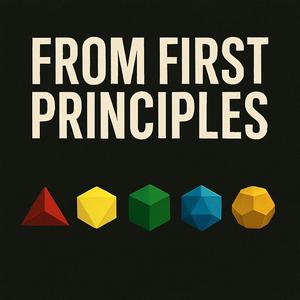FFP EP. 19 | The Race to the Double Helix — Watson, Crick, Franklin & the Real Story of DNA
Hosted by Lester Nare and Krishna Choudhary, this single-story deep dive tells the full story of how humanity uncovered the structure of DNA — and the human tensions that shaped it. From Mendel’s pea-plant mathematics to Rosalind Franklin’s groundbreaking x-ray crystallography, from Cavendish–King’s College rivalries to the famous Photo 51, this episode follows the scientific and ethical arc behind one of the most important discoveries in modern biology.SummaryBefore DNA — Mendel’s inheritance laws, Miescher’s nuclein, Levene’s early models, and why scientists initially believed proteins carried heredity.The turning point — Griffith’s transformation experiment and the Avery–MacLeod–McCarty proof that DNA is the genetic material.The physics connection — Schrödinger’s What Is Life? and the idea of an “aperiodic crystal” inspiring Watson, Crick, and a generation of physicists to enter biology.Two labs, one race — Cavendish vs. King’s College, Wilkins vs. Franklin, and the clash of personalities, methods, and interpretations.Photo 51 — Franklin and Gosling’s pivotal diffraction image revealing the helical structure of DNA.The model — base pairing, antiparallel strands, and why the double helix immediately explained replication.Recognition & legacy — the 1953 Nature papers, the 1962 Nobel Prize, Franklin’s omission, and Watson’s later controversies reshaping his legacy.Show NotesMendel (1866) — Pea Plant GeneticsGriffith (1928) — TransformationAvery–MacLeod–McCarty (1944)Schrödinger — What Is Life?Franklin’s Photo 51Watson & Crick (1953)


